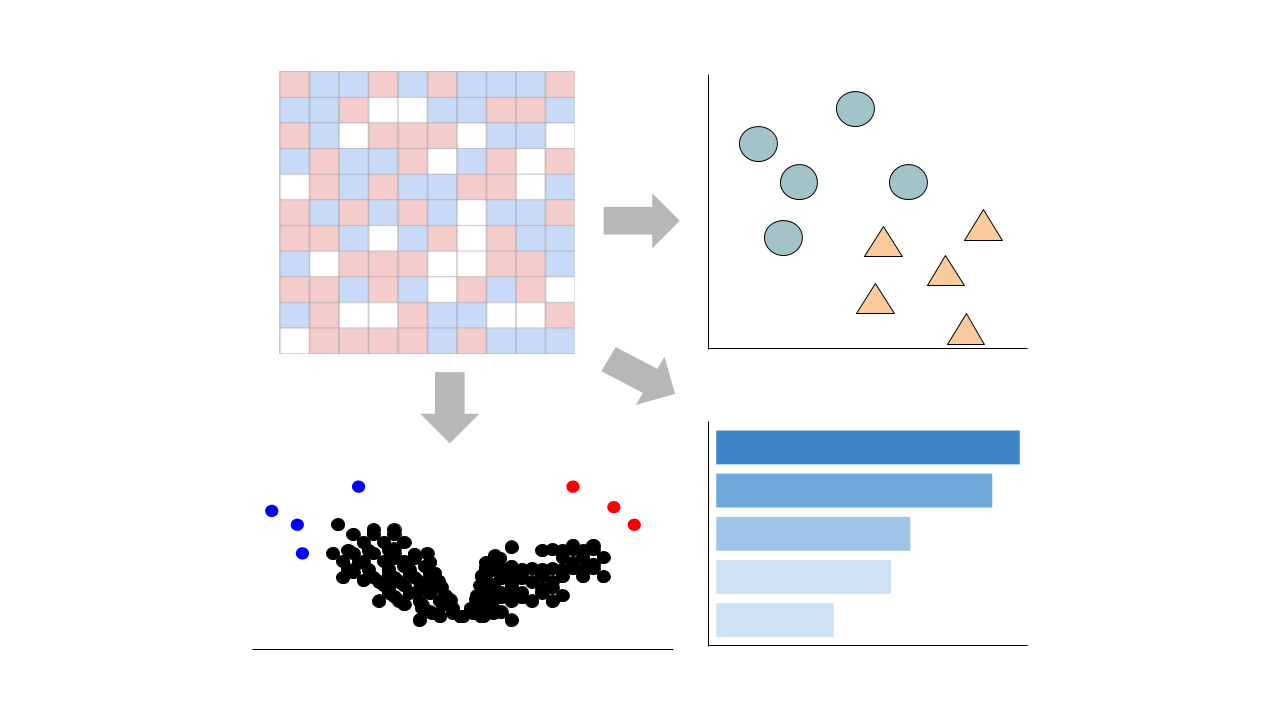 Gene counts are sourced from ARCHS4, which provides uniform alignment of GEO samples.
You can learn more about ARCHS4 and its pipeline here.
Gene counts are sourced from ARCHS4, which provides uniform alignment of GEO samples.
You can learn more about ARCHS4 and its pipeline here.
Select conditions below to toggle them from the plot:
| GROUP | CONDITION | SAMPLES |
|---|---|---|
| HK-2 |
GSM4795612 GSM4795613 GSM4795614
|
|
|
GSM4795609 GSM4795610 GSM4795611
|
Submission Date: Sep 18, 2020
Summary: Tubulointerstitial injury plays an important role in diabetic nephropathy (DN) progression; however, no reliable urinary molecule has been used to predict tubulointerstitial injury and renal outcome of DN clinically. In this study, based on tubulointerstitial transcriptome, we identified secretory leukocyte peptidase inhibitor (SLPI) as the molecule associated with renal fibrosis and prognosis of DN. In tubular cells, high glucose could upregulate SLPI, which bound with β-catenin and GSK-3β reciprocally, abolished the interaction between β-catenin and GSK-3β, diminished GSK-3β-regulated β-catenin phosphorylation and the subsequent ubiquitination and degradation, thus led to β-catenin signaling activation and renal fibrosis. Db/db mice injected with adenovirus carrying Slpi-3xflag-GFP (Ad-Slpi-GFP) developed β-catenin signaling activation in the proximal tubule, worse albuminuria and tubulointerstitial fibrosis. Conversely, Slpi knockout (KO) mice with STZ-induced DN developed less albuminuria, tubulointerstitial fibrosis and β-catenin signaling activation. Furthermore, clinical studies showed that urinary SLPI protein level (uSLPI/Cr) had significant correlation with intrarenal SLPI mRNA and interstitial fibrosis. In an independent prospective cohort enrolled 711 patients with biopsy proven DN, uSLPI/Cr level was significantly associated with eGFR slope and improved the prediction value of renal outcome. Together, our study identified SLPI as a novel critical regulator for the progression of tubulointerstitial injury, which may be used as an independent risk predictor of DN progression.
GEO Accession ID: GSE158230
PMID: 35910382
Submission Date: Sep 18, 2020
Summary: Tubulointerstitial injury plays an important role in diabetic nephropathy (DN) progression; however, no reliable urinary molecule has been used to predict tubulointerstitial injury and renal outcome of DN clinically. In this study, based on tubulointerstitial transcriptome, we identified secretory leukocyte peptidase inhibitor (SLPI) as the molecule associated with renal fibrosis and prognosis of DN. In tubular cells, high glucose could upregulate SLPI, which bound with β-catenin and GSK-3β reciprocally, abolished the interaction between β-catenin and GSK-3β, diminished GSK-3β-regulated β-catenin phosphorylation and the subsequent ubiquitination and degradation, thus led to β-catenin signaling activation and renal fibrosis. Db/db mice injected with adenovirus carrying Slpi-3xflag-GFP (Ad-Slpi-GFP) developed β-catenin signaling activation in the proximal tubule, worse albuminuria and tubulointerstitial fibrosis. Conversely, Slpi knockout (KO) mice with STZ-induced DN developed less albuminuria, tubulointerstitial fibrosis and β-catenin signaling activation. Furthermore, clinical studies showed that urinary SLPI protein level (uSLPI/Cr) had significant correlation with intrarenal SLPI mRNA and interstitial fibrosis. In an independent prospective cohort enrolled 711 patients with biopsy proven DN, uSLPI/Cr level was significantly associated with eGFR slope and improved the prediction value of renal outcome. Together, our study identified SLPI as a novel critical regulator for the progression of tubulointerstitial injury, which may be used as an independent risk predictor of DN progression.
GEO Accession ID: GSE158230
PMID: 35910382
Visualize Samples
 Visualizations are precomputed using the Python package scanpy on the top 5000 most variable genes.
Visualizations are precomputed using the Python package scanpy on the top 5000 most variable genes.
Precomputed Differential Gene Expression
 Differential expression signatures are automatically computed using the limma R package.
More options for differential expression are available to compute below.
Differential expression signatures are automatically computed using the limma R package.
More options for differential expression are available to compute below.
Signatures:
Select conditions:
Control Condition
Perturbation Condition
Only conditions with at least 1 replicate are available to select
 Differential expression signatures can be computed using DESeq2 or characteristic direction.
Differential expression signatures can be computed using DESeq2 or characteristic direction.
This pipeline enables you to analyze and visualize your bulk RNA sequencing datasets with an array of downstream analysis and visualization tools. The pipeline includes: PCA analysis, Clustergrammer interactive heatmap, library size analysis, differential gene expression analysis, enrichment analysis, and L1000 small molecule search.

 Chatbot
Chatbot Single Gene Queries
Single Gene Queries
 Gene Set Queries
Gene Set Queries
 Bulk Studies
Bulk Studies
 Single Cell Studies
Single Cell Studies
 Hypotheses
Hypotheses
 Resources
Resources
 Contribute
Contribute
 Downloads
Downloads About
About
 Help
Help